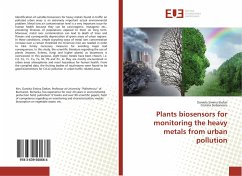
Characterizing the complex multiscale geometry of plants
Characterizing multiscale nature of plants using fractal geometry descriptors, application on light-interception modeling
Versandkostenfrei!
Versandfertig in 6-10 Tagen
47,99 €
inkl. MwSt.

PAYBACK Punkte
24 °P sammeln!
With concerns such as sustainable development or climat changes, controling and understanding plant growth has become important society matters. Computer models that uses plant architecture, called "functional-structural plant models" (FSPMs), have become more and more widespread. Contrariwise to agronomic models based on the relations between few parameters, FSPMs allow to assess the relation between the three-dimensional structure of plants and the physical and ecophysiological processes that drive their development. However, plant architecture, and particularly its geometry, is rather compl...
With concerns such as sustainable development or climat changes, controling and understanding plant growth has become important society matters. Computer models that uses plant architecture, called "functional-structural plant models" (FSPMs), have become more and more widespread. Contrariwise to agronomic models based on the relations between few parameters, FSPMs allow to assess the relation between the three-dimensional structure of plants and the physical and ecophysiological processes that drive their development. However, plant architecture, and particularly its geometry, is rather complex and can be described at different detail levels. In this thesis we wanted to characterize the complex multiscale geometry of plants with few descriptors in order to be able to acknowledge the structure in simple models of light interception.












